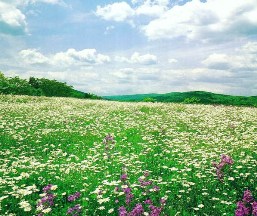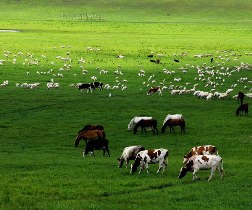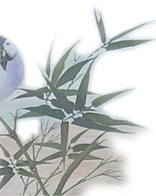|
 Listen to Shirley Singing the Poem in Chinese & English March 12, 2012 Listen to Shirley Singing the Poem in Chinese & English March 12, 2012
 Listen to Shirley Explaining the Poem & Follow Me to Read It Listen to Shirley Explaining the Poem & Follow Me to Read It
 Follow Shirley to Read the New Words & the Poem Follow Shirley to Read the New Words & the Poem
 Learn the Meaning of the Poem & It Created Background Learn the Meaning of the Poem & It Created Background
 See Shirley Created Paintings for the Poem May 31- June 3, 2012 See Shirley Created Paintings for the Poem May 31- June 3, 2012
 See Shirley Created Paintings for the Poem Feb 26- March 1, 2012 See Shirley Created Paintings for the Poem Feb 26- March 1, 2012
 See Shirley Created Paintings for the Poem July 19,2010 See Shirley Created Paintings for the Poem July 19,2010
 About the Author & Background of the Poem About the Author & Background of the Poem
The poem Chi Le Ge -- Che Le Song was created in the Northern and Southern Dynasties ´╝ł420-589).
It was sung in Xianbei Language in the Northern Dynasty ´╝ł 386-581, it included the Northern Wei Dynasty, Northern Qi Dynasty, Northern Zhou Dynasty´╝ëat the first, and then it was translated in Chinese language.
About its author, there are two versions. One version said it was created by an anonymous person; the other version said it was created by a military officer under the first emperor Gao Hua of the Eastern Wei ? Hu Lăť Jin in 546.
Chi Le, was called ÔÇť Ting LingÔÇŁ in Han Dynasty and it was also called Chi Le in Wei, Jin and the Northern and Southern Dynasties.
Chi Le people were famous for creating vehicles with high wheels. The longest diameter of the wheels was 1.4 meters. The height of the vehicle was higher than an ox, it was as similar as a horse. It could go across the places covered the flourish grass, thick snow or the fenny places. So, the southern people also called Chi Le People " Gao Che ? High Vehicle".
In the Qin Dynasty (221 BC - 206 BC ) and Han Dynasty (206 BC - 221) , the ancestor of the Chi Le lived in todayÔÇÖs Baikal valley. At the end of the Han Dynasty ( 206 BC - 220) and the Southern and Northern Dynasties, most of Chi Le people moved or they were forced to move to the South.
The rich southern area of the great desert became their nomadic place. Along with more and more Chi Le people were gathered there, this place was called Chi Le Chuan ? Chi Le Plain.
During the Chi Le people moved into Chi Le plain in the Northern and Southern Dynasties, the Northern area of the Yellow River of China was governed by another nomadic nation ? Xianbei. Both of Chi Le people and Xianbei people had their nation integration.
In 534, the North Wei was splited into Eastern Wei and Western Wei. Both of the two Weis had a war in 546. The first emperor of the Eastern Wei ? Gao Huan led an army with 100,000 soldiers to fight with Western Wei. After fighting for about 50 days, he lost 70,000 soldiers.
On the retreated road, a rumor said that Gao would die because he was hit by an arrow. For stabilizing the morale, with the wound and sickness, Gao Huan gave his ministers a banquet. For inspiring enthusiasm, he ordered one of his military officers Hu Lăťjin to create a song that could express the hearts of both of Xianbei and Chile nations.
Then, Hu Lăť Jin sang Chi Le Song in Xianbei language at the first. Gong Hua, his officers and all soldiers sang it with tears together, at once, the army was inspired.
Since then, Chi Le Gong has been loved by Chinese people for 1478 years.
Enjoy the Poem
With just 27 simple Chinese characters, this poem expresses a huge artistic appeal via describing
how vast ,distant, wealthy and glorious the Chi Le Plain was, and hints the endless love of the Chi Le people to the extensive grassland and their nomadic life.
The first two lines: ŠĽĽňőĺňĚŁ - Ch├Č l├Ę chu─ün´╝îÚś┤ň▒▒ńŞő - y─źn sh─üng xi├áŃÇéChi Le plain lies at the foot of the Yinshan Mountains.
Yinshan Mountain is one of the ten biggest mountains of China. It lies across the middle of the Inner Mongolia. The eastern part winds its way to the Northwestern part of todayÔÇÖs Hebei Province, stretching about 1200 kilometers (about 1931 miles); the width from south to the north is 50 - 100 kilometers (80 ? 160 miles). It is the northern borderline of the Yellow River valley, the boundary of monsoon and non-monsoon, and also the borderline between Chinese ancient nomadic culture and the agricultural culture / farm culture. A part of the Great Wall built in Qin Dynasty ( 221 B.C. to 207 B. C) was just on the top of the Yinshan Mountains.
The first six simple but quite bright sound Chinese characters point out the geographical position and physical characteristics of the Chi Le Plain ?there is
nothing to block peopleÔÇÖs visual field .Only the endless plain stretches out as far as the foot of the Yinshan Mountains to meet readersÔÇÖ eyes.
Behind the surface language, indirectly, we have also been hinted something as a Chinese proverb said:ÔÇť y─ź f─üng shăöi tăö yăÄng y─ź f─üng r├ęn - Each place has its own way of supporting its own inhabitants.ÔÇŁ As a group of nomadic people, Chi Le People certainly have wide chests like
the extensive grassland; they can live in the wilderness, they have certainly some strong and brave national characters; the most important reason they love Chi Le Plain maybe not only for its beautiful view, but also for it is their source of livelihood.
So, I feel, the first two lines, tell us not only where the Chi Le is, but also, what Chi Le people were like and how they love this land.
The next two lines: ňĄęń╝╝šę╣ň║É - ti─ün s├Č qi├│ng l├║, šČ╝šŤľňŤŤÚçÄ - lăĺng g├ái s├Č y─ŤŃÇé ? Sky is just like a domed yurt covering/ enveloping the earth.
ÔÇť Qiong Lu ÔÇť means ÔÇť yurt ÔÇŁ, Today we call it ÔÇť Meng Gu Bao - Mongolian yurt ÔÇŁ. To say the sky is like a yurt, What a wonderful comparison it is! The size of a little yurt is just like the huge sky. The shape of the little yurt is also just like the huge sky. we can easily understand how Chi Le People were proud and loved their home and land.
Basing on the background, the two lines paint out how extensive the sky and the land , write out the most typical life character of Chi Le nation, and describe a great Northern landscape for us.
The fifth and sixth lines: ňĄęŔőŹŔőŹ - Ti─ün c─üng c─üng,
ÚçÄŔîźŔîź - y─Ť m├íng m├íng ? The heavens are dark green/blue and vast, the wilds is boundless ÔÇť.
ÔÇť Cang cang ÔÇŁ means dark green and vast, saying how the heavens are high and vast, so that the usual blue has been changed to be dark green. ÔÇťMang mangÔÇŁ means endless,to describe how the open wilds is immensity.
With repeating the same Chinese characters, to emphasize how wide and faraway the sky is and how vastness the plain is, to hint us how the Chi Le people would have the same vast chests, bold and uninhibited characteristic.
The last line: ÚúÄňÉ╣ŔŹëńŻÄŔžüšëŤšżŐ - f─ông chu─ź căÄo d─ź xi├án ni├║ y├íng ? When the wind blows the grass low, cattle and sheep appear there.ÔÇŁ
Because the grass is too plentiful and too flourish, everything was concealed inside. Now, the wind is blowing the grass low, and the flickering cattle and sheep appear everywhere.
Basing on the macroscopic and static describing in the first six lines, this line switches the writing to the other subject, with three verbs ÔÇť chui - blowÔÇŁ, ÔÇť di - lowÔÇŁ and ÔÇťxian - appearÔÇŁ in a line that there is only 7 Chinese characters in it with so much passion, just like something from the beginning to the end without stopping, this line pushes the poem from static state to the activity, from the entirety describing to the detail statement, from the surface to the inside, reaching the climax. At once, the whole of the grassland is full of the vibrant with life.
In other words, the first 6 lines of this poem write the plain, the great mountains, the sky and the wilds, create a quite magnificently artistic conception, just like a play, the screen has been opened, we must see the actors or actress there, then the play can be started and go on. Therefore, there is the last line, to complete the whole of the poem -- all of the descriptions on the big size view are focused on a group or groups of cattle and sheep.
What a wonderful writing style it is!
Maybe you would like to ask, why they sing high praise for Chi Le Plain related to their life style? The domed yurt is their living places, the grassland is the source of their food and clothes, they have certainly deep loving feeling to these things which are related to their life and fortune. Therefore, I would like to say, when they admire the plain and their cattle and sheep, they are just admiring their hometown.
For the same reason, this poem has a deeply strong national and local color.
ŃÇÇŃÇÇ
As Gao Huan and his soldier did, every time I read this poem, I am touched by something inside. Therefore, after visiting my parents in Wuxi in Oct, 2005, on the airplane coming back to Shenzhen, When I looked at the vast and blue sky, the white floating clouds, thinking of the first time, my mother saw and heard what I had created, and first time, she encouraged me to create my own music after she was against me to learn painting and music for many years, tears could not help flowing on my face silently, then on the airplane, I created a piece of music to match this poem. Then I created 4 paintings to match it in Shenzhen, July, 2010, and in Beijing, May, 2012.
Also, I re-wrote this article now. I do hope that my effort will be of some help with you to learn Chinese culture and cultures...
Translation of the Poem
Chi Le Song
By by Hu Lăťjin ( Southern and Northern Dynasties 420 -589)
Chile plain,
Lies at the foot of the Yinshan Mountains,
The sky is like a domed yurt,
Enveloping the earth.
The dark-green heavens are vast,
The wilds boundless.
When the wind blows the grass low,
Cattle & sheep appear there...
Chinese Characters and Pronunciations
You can clink any Chinese Character to open the New Character Board and to see its Chinese pinyin, meaning, pronunciation and follow me to read it, also, you can hit the links over to enter the Painting Column,or you can directly enter the art notes on the painting that I created for this poem to see my painting and art notes for the poem
ŠĽĽňő劺î - Ch├Č L├ĘG─ô
ŔâíňżőÚçĹ- h├║lăťj─źn (ňŹŚňťŁ 420 - 589)
ŠĽĽňőĺňĚŁ - Ch├Č l├Ę chu─ün´╝î
Úś┤ň▒▒ńŞő - y─źn sh─üng xi├áŃÇé
ňĄęń╝╝šę╣ň║É - ti─ün s├Č qi├│ng l├║,
šČ╝šŤľňŤŤÚçÄ - lăĺng g├ái s├Č y─ŤŃÇé
ňĄęŔőŹŔőŹ - Ti─ün c─üng c─üng,
ÚçÄŔîźŔîź - y─Ť m├íng m├íng´╝î
ÚúÄňÉ╣ŔŹëńŻÄŔžüšëŤšżŐ - f─ông chu─ź căÄo d─ź xi├án ni├║ y├íngŃÇé
 If you have any questions, comments and suggestions, please write to shirley@ebridge.cn or shirleyz004@yahoo.com. You are welcome to publish your opinions in Message Board as well. If you have any questions, comments and suggestions, please write to shirley@ebridge.cn or shirleyz004@yahoo.com. You are welcome to publish your opinions in Message Board as well.
Shirley Zhang
August 9´╝î 2012´╝î March 11, 2012, July 18, 2010/Oct 8, 2005
|

